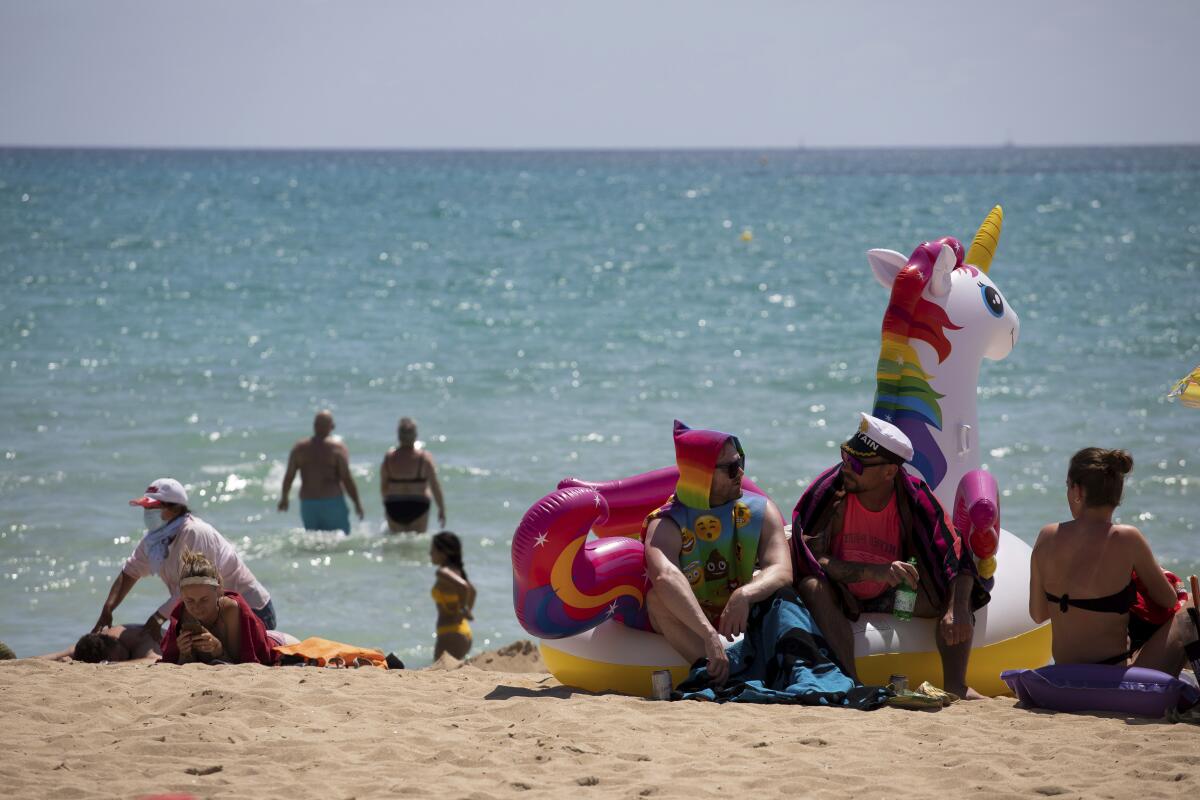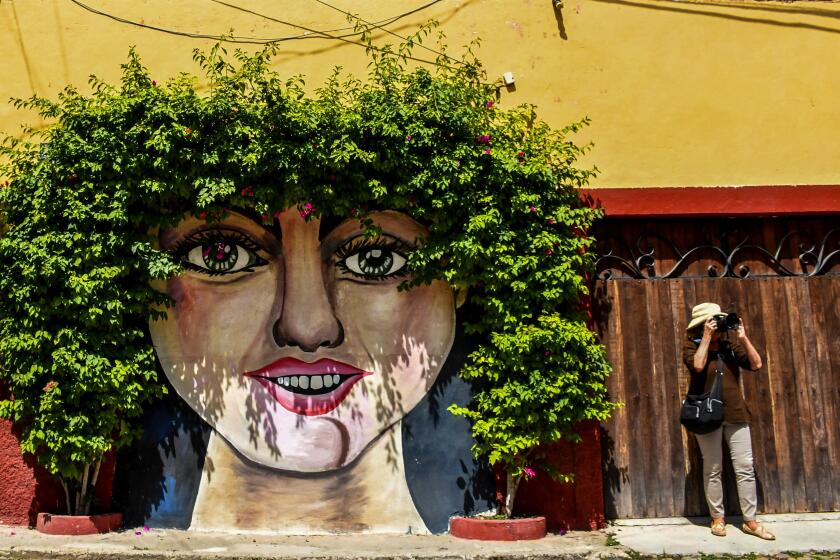Spain opens borders to tourists and cruise ships

- Share via
PALMA DE MALLORCA, Spain — Spain jump-started its summer tourism season Monday by welcoming vaccinated visitors from most countries as well as European tourists who can prove they are not infected with coronavirus. It also reopened its ports to cruise ships.
The move opened borders for the first tourists from the United States and other countries outside the European Union since those travelers were banned in March last year, when the COVID-19 pandemic hit global travel.
Matthew Eisenberg, a 22-year-old student, excitedly stepped out of Madrid’s airport, ready to enjoy the Spanish capital along with two more American friends.
“We came to Spain the first day we could, because we are very excited to travel here,” Eisenberg said, showing a certificate for the two Moderna vaccine jabs he received in February and March.
But Spain is still banning nonessential travelers from Brazil, India and South Africa, where virus variants have been been a major source of concern.
Visitors need proof they were fully vaccinated at least 14 days before the trip or that they overcame a COVID-19 infection in the last six months. The certificates can be in Spanish, English, French or German — or their equivalent translations in Spanish, the government order said.
Many countries move from “do not travel” to “reconsider.”
The vaccines accepted are those approved by Europe’s drug regulator — Pfizer-BioNTech, Moderna, AstraZeneca and Johnson & Johnson — as well as two Chinese vaccines authorized by the World Health Organization, Sinopharm and Sinovac.
The same documents will be valid for visitors from the European Union until the bloc fully rolls out its “Digital Green Certificate” as expected on July 1. Spain on Monday joined seven other EU countries already implementing the program.
Alfredo González, an official in charge of digital health and innovation at Spain’s Health Ministry, said the certificate is not a passport but a document that eases mobility across Europe.
“Without the certificate, travel will be possible, but the entry in every country will be slower and controls such as quarantines could apply,” said González, adding that all airports had established fast-track channels with technology able to confirm the digital certificates issued by other EU countries.
Beginning Monday, nonvaccinated travelers from the EU’s 27 countries could also enter Spain with the negative results of recent coronavirus antigen tests, which are cheaper and faster than PCR tests.
The Spanish government hopes to welcome 14.5 million to 15.5 million visitors between July and September. That’s about 40% of the tourists in the same period of 2019 but twice as many as last summer, when only EU visitors could enter Spain.
Tourism is a major industry that in 2019 accounted for more than 12% of Spain’s GDP.
In a setback, many British tourists who love Southern Europe’s beaches aren’t expected in large numbers yet because they must quarantine upon their return to the U.K.
Still, Manchester resident Randolph Sweeting said his holiday on the Spanish island of Mallorca was worth the mandatory self-isolation when he gets home.
“I was here twice last year, and when I went home, I had to quarantine on my own for two weeks. So it’s not a problem for me. I’ve done it before,” the 68-year-old said at Palma de Mallorca Airport.
Belén Sanmartín, director of the Meliá Calviá Beach Hotel in Mallorca, said the U.K. government’s decision to keep Spain in its list of higher-risk territories was hard to understand in the Balearic Islands, where the infection rate is lower than in Britain.
“It has been a big disappointment, because we were ready to receive visitors from the British market,” Sanmartín said, adding that bookings in her hotel were slowly picking up, thanks to Spanish mainlanders and German and French tourists.
In another move to boost tourism, Spanish ports opened to cruise ships on Monday, nearly 15 months after they were banned.
After peaking in late January at nearly 900 new cases per 100,000 residents in 14 days, Spain’s coronavirus contagion indicator has dropped to 115 per 100,000. Still, its descent has slowed down in the last days as new infections spread among unvaccinated groups.
Spain has counted more than 80,000 COVID-19 deaths during the pandemic.
More to Read
Sign up for The Wild
We’ll help you find the best places to hike, bike and run, as well as the perfect silent spots for meditation and yoga.
You may occasionally receive promotional content from the Los Angeles Times.







